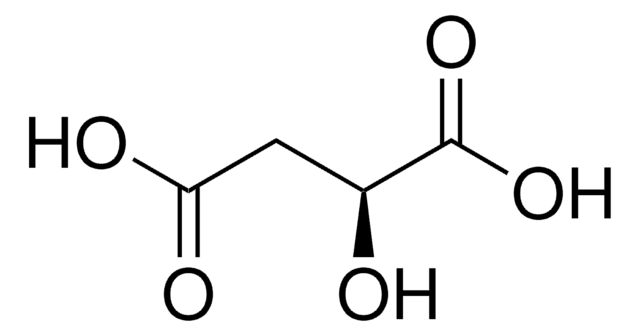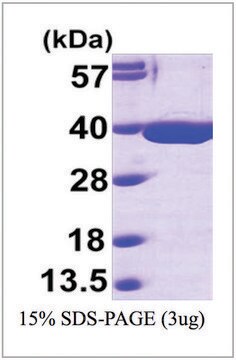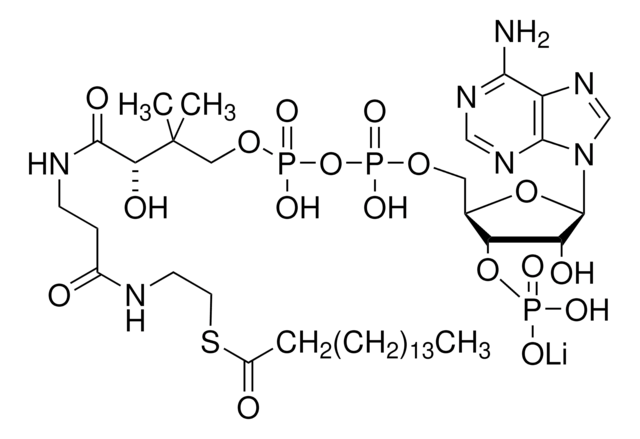SRP6103
MDH1 human
recombinant, expressed in E. coli, ≥95% (SDS-PAGE)
Sinônimo(s):
MDH-s, MDHA, MOR2, Malate dehydrogenase cytoplasmic
About This Item
Produtos recomendados
fonte biológica
human
recombinante
expressed in E. coli
Ensaio
≥95% (SDS-PAGE)
Formulário
liquid
peso molecular
37.4 kDa (342 aa, 1-334 aa + CT His Tag)
embalagem
pkg of 100 μg
técnica(s)
activity assay: suitable
nº de adesão NCBI
Condições de expedição
dry ice
temperatura de armazenamento
−70°C
Informações sobre genes
human ... MDH1(4190)
Descrição geral
Aplicação
Ações bioquímicas/fisiológicas
forma física
Nota de preparo
Outras notas
Código de classe de armazenamento
11 - Combustible Solids
Classe de risco de água (WGK)
WGK 3
Ponto de fulgor (°F)
Not applicable
Ponto de fulgor (°C)
Not applicable
Escolha uma das versões mais recentes:
Certificados de análise (COA)
Não está vendo a versão correta?
Se precisar de uma versão específica, você pode procurar um certificado específico pelo número do lote ou da remessa.
Já possui este produto?
Encontre a documentação dos produtos que você adquiriu recentemente na biblioteca de documentos.
Nossa equipe de cientistas tem experiência em todas as áreas de pesquisa, incluindo Life Sciences, ciência de materiais, síntese química, cromatografia, química analítica e muitas outras.
Entre em contato com a assistência técnica







